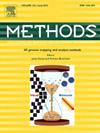从大鼠黑质中分离外泌体用于基于质谱的蛋白质组学研究
IF 4.3
3区 生物学
Q1 BIOCHEMICAL RESEARCH METHODS
引用次数: 0
摘要
外泌体是起源于内吞过程的细胞外小泡,由于其在生理功能和病理条件中的作用而受到越来越多的关注。外泌体最初是在20世纪80年代被发现的,它通过内陷内体膜在多泡体(MVBs)内形成,导致腔内囊泡(ILVs)的产生。这些ilv可以被溶酶体降解或作为外泌体释放到细胞外空间,促进细胞间的通讯。在神经系统中,外泌体参与多种功能,包括神经发育和神经退行性疾病(如阿尔茨海默病和帕金森病)的进展。本研究提出了大鼠脑黑质外泌体的分离和蛋白质组学分析的新方案。通过结合差速离心和免疫捕获技术,与传统的超离心方法相比,我们获得了更纯净的外泌体部分和更高的外泌体产量。我们的蛋白质组学分析从三个不同的外泌体样本(SN-EV-1、SN-EV-2和SN-EV-4)中鉴定了51、48和70个蛋白质,并通过基因本体注释揭示了它们参与多种生物学功能。这项研究不仅建立了一种可靠的分离脑源性外泌体的方法,而且为健康和神经退行性疾病之间的比较研究奠定了基础。最终,我们的研究结果旨在增强对外泌体在疾病机制中的作用的理解,并有助于识别神经退行性疾病的潜在生物标志物和治疗靶点。本文章由计算机程序翻译,如有差异,请以英文原文为准。
Comprehensive account of exosome isolation from rat substantia nigra for mass spectrometry-based proteomics study
Exosomes, small extracellular vesicles originating from endocytic processes, have garnered increasing attention due to their roles in both physiological functions and pathological conditions. Initially identified in the 1980 s, exosomes are formed within multivesicular bodies (MVBs) through the invagination of the endosomal membrane, leading to the creation of intraluminal vesicles (ILVs). These ILVs can either be degraded by lysosomes or released into the extracellular space as exosomes, facilitating intercellular communication. In the nervous system, exosomes are implicated in various functions, including neural development and the progression of neurodegenerative diseases such as Alzheimer’s and Parkinson’s disease. This study presents a novel protocol for the isolation and proteomic analysis of exosomes derived from the substantia nigra (SN) of rat brains. By employing a combination of differential centrifugation and immunocapture techniques, we achieved a purer exosome fraction and higher exosome yield compared to traditional ultracentrifugation methods. Our proteomics analysis identified 51, 48, and 70 proteins from three distinct exosome samples (SN-EV-1, SN-EV-2, and SN-EV-4), with Gene Ontology annotation revealing their involvement in diverse biological functions. This research not only establishes a reliable method for isolating brain-derived exosomes but also sets the stage for comparative studies between healthy and neurodegenerative conditions. Ultimately, our findings aim to enhance the understanding of exosomal roles in disease mechanisms and contribute to the identification of potential biomarkers and therapeutic targets for neurodegenerative disorders.
求助全文
通过发布文献求助,成功后即可免费获取论文全文。
去求助
来源期刊

Methods
生物-生化研究方法
CiteScore
9.80
自引率
2.10%
发文量
222
审稿时长
11.3 weeks
期刊介绍:
Methods focuses on rapidly developing techniques in the experimental biological and medical sciences.
Each topical issue, organized by a guest editor who is an expert in the area covered, consists solely of invited quality articles by specialist authors, many of them reviews. Issues are devoted to specific technical approaches with emphasis on clear detailed descriptions of protocols that allow them to be reproduced easily. The background information provided enables researchers to understand the principles underlying the methods; other helpful sections include comparisons of alternative methods giving the advantages and disadvantages of particular methods, guidance on avoiding potential pitfalls, and suggestions for troubleshooting.
 求助内容:
求助内容: 应助结果提醒方式:
应助结果提醒方式:


